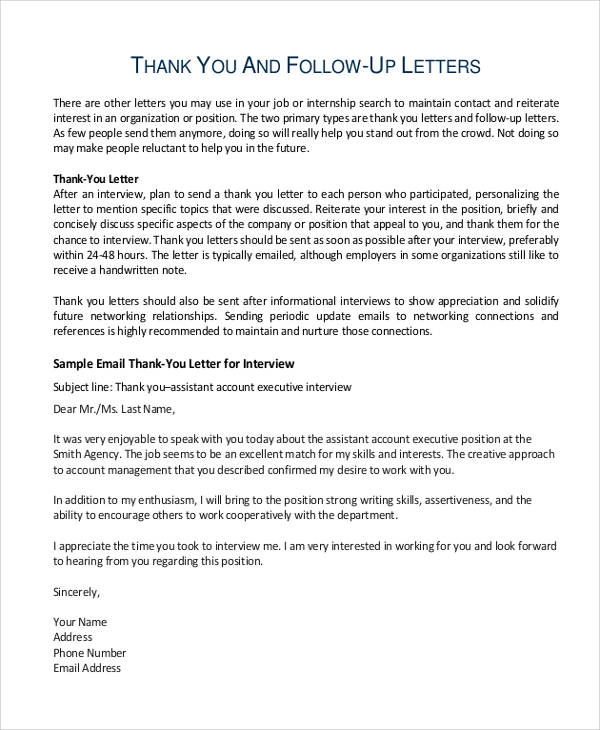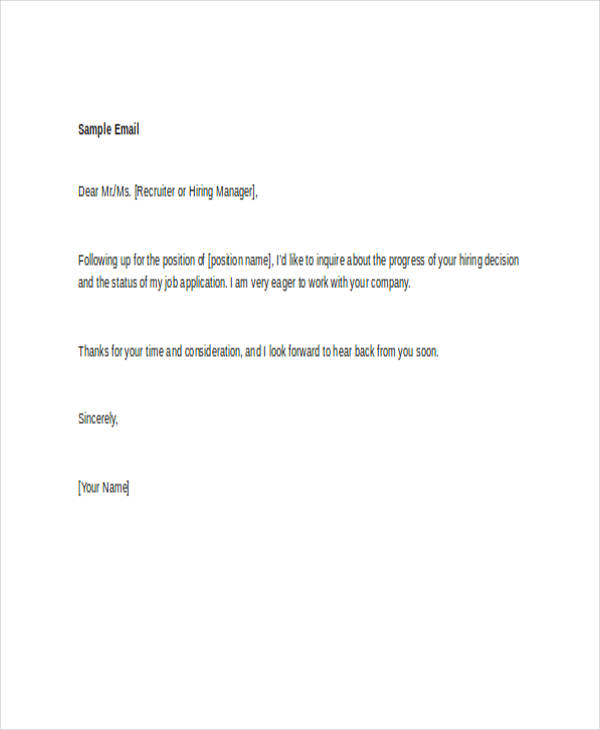

Any of these can be correct, but the one you choose should make sense for your audience and brand. Some companies take a formal approach to email using "Sir" or "Madam" or "Mr." or "Mrs.," while others may use a first name or first and last name. Use salutations appropriate for your position, industry and brand voice. It makes it clear that it's an important message. The subject can be something simple like "Follow Up: Mackey's Lemonade," because it's short and tells the reader what to expect from the email. Whenever you send a follow-up email, you should lead with a subject that entices the reader to open it. By taking the audience and goal into consideration, you can adjust the tone of your email and language to meet the needs of the reader. Once you know what you are trying to accomplish, you can identify the audience, whether it be a decision-maker, hiring manager or new business contact. This could be closing on a sales proposal, establishing a meeting with a networking connection or following up on a job application or interview. Use these steps to write an effective follow-up email for any purpose:Īdd your signature and contact information.įirst, identify the goal of your follow-up email.

Application follow up email how to#
Related: What to Do After an Interview: 9 Tips to Help You Succeed How to write a follow-up email Job application follow-up email: If you've submitted a job application to a company and haven't gotten a response, sending a job application follow-up to a potential employer can help you determine if your application is being shortlisted for an interview. This helps you to determine if you are still being considered for the position. Interview follow-up email: It's customary to send an interview follow-up email to a potential employer once the designated interview response period has passed, such as two weeks after the interview. You should send this after a networking event to anyone you met at the event. The goal is to nurture a new connection with someone and sometimes to set up a subsequent meeting. Networking follow-up email: A networking follow-up email confirms your acquaintance with someone you met networking. The goal of this email is to foster continued business and ensure repeat customers. It is designed to rekindle the interest of the person you are selling to.Īfter-sale follow-up email: If you've concluded a sale, it may be a necessary part of your marketing strategy to send a follow-up email that offers a discount on subsequent purchases or offers thanks to a customer for their purchase. Sales follow-up email: You write this type of email to close on an open proposal to a customer. Here are some examples of common follow-up emails: There are several types of email follow-ups that you might write throughout your career. Whether staying informed about the status of a position you applied to, the status of a sales proposal or some other matter, you can use a properly structured follow-up email to get the answers you need. Email is an effective channel for establishing open communication with someone on the other side of a business interaction. When you show appreciation for someone else's time with a follow-up email, you are building a rapport that could help secure the next steps for a job or other transaction.
Application follow up email professional#
When you follow up with someone, it demonstrates that you are a professional who shows appropriate interest in pursuing a business relationship, whether it be a new employment opportunity or a chance to gain a potential client.įollowing-up makes others feel appreciated.

Here are some benefits to following up via email: Understanding the benefits of a good follow-up email can make this a valuable tool for pursuing employment. There are a number of scenarios that might prompt someone to send an email follow-up, including:Ĭhecking the status of a job application or interviewįollowing up on a sale or other kind of marketing conversion Related: Follow-Up Email Examples For After the Interview What are email follow-ups?Įmail follow-ups are professional messages sent to check in on the status of a pending transaction, contract or engagement. In this article, we discuss email follow-ups and provide a template and example to help you write your own. Understanding how to use a follow-up email is vital to building strong professional connections and achieving career goals.

It may also be known as a follow-up email or follow-up via email in workplace communication. When someone sends an email to follow up on an important conversation or transaction, it is called an email follow-up.


 0 kommentar(er)
0 kommentar(er)
